Latest News
Kitchen Chat and more…
Kitchen Chat and more…
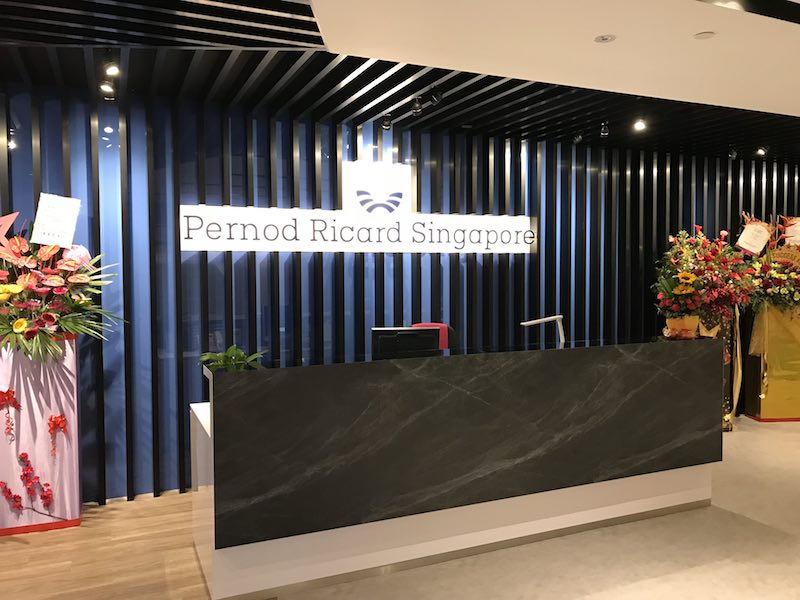
The new Reception at Pernod Ricard Singapore
Geek Flora and Geek Choc visited Pernod Ricard Singapore recently for a drink with their Assistant Brand Community Manager, Denis English. It was our first time to the office bar, and we were excited to find out how it looks like. When we reached the office lobby, we found Denis patiently waiting for us outside the office! That was a great welcome!
Denis walked us into the office, and the first thing that greeted us was the magnificent reception that you see at the top of this post. We understand that Pernod Ricard renovated the office and they have just recently reopened the bar as well. At one corner of the large reception area, there is a sofa with some splendid posters. This is the waiting area.
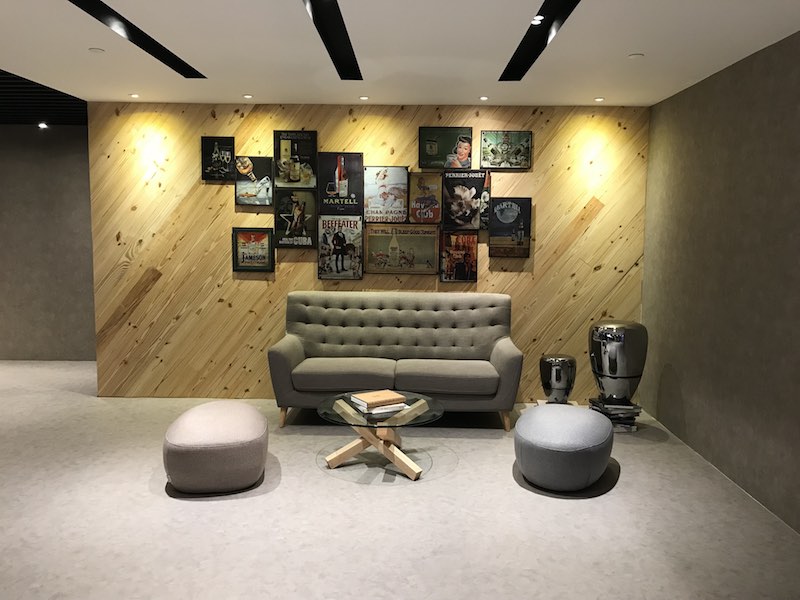
Pernod Ricard’s Waiting Area
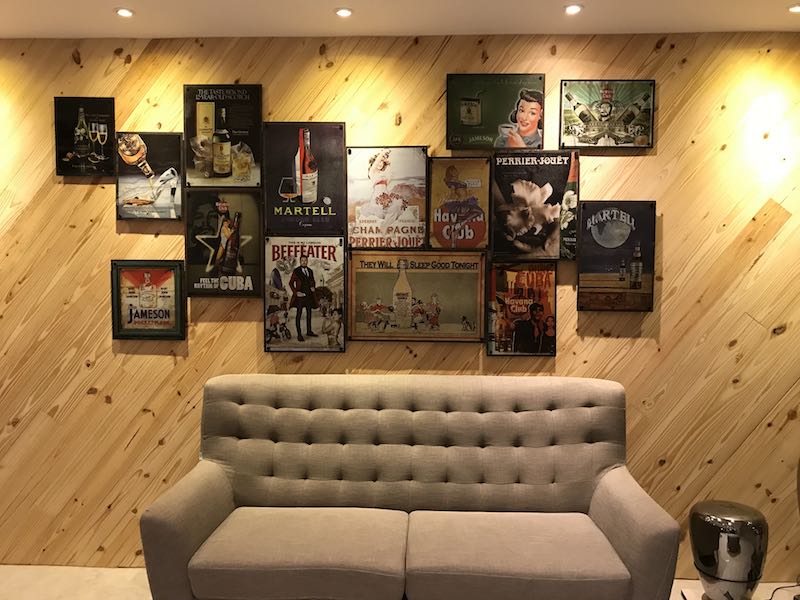
Check out the posters. They are gorgeous!
We turned into a corridor where there is a wall filled with their products. There is a selection of fine wines, cognac, whiskies, gins, vodka, tequila and rum. Here’s a picture to show you how the wall looks like.
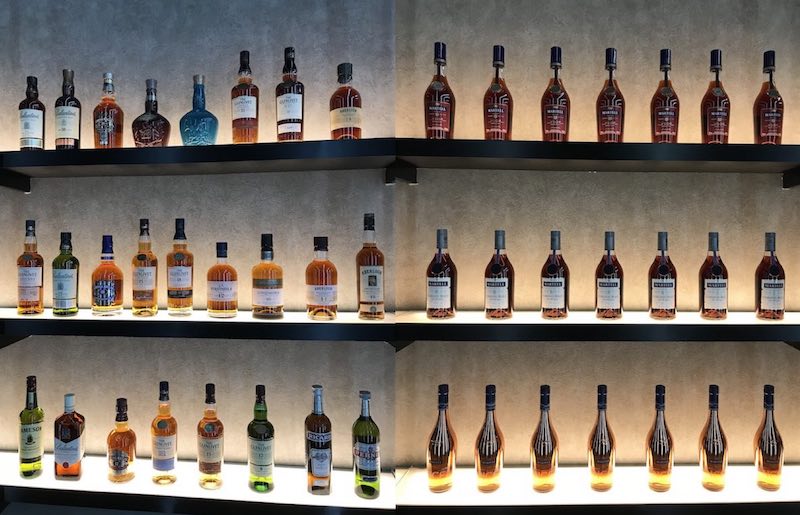
The Whisky_Cognac Wall
This beautiful corridor leads to a vast, open space that house the Pernod Ricard’s office bar. This is how it looks.
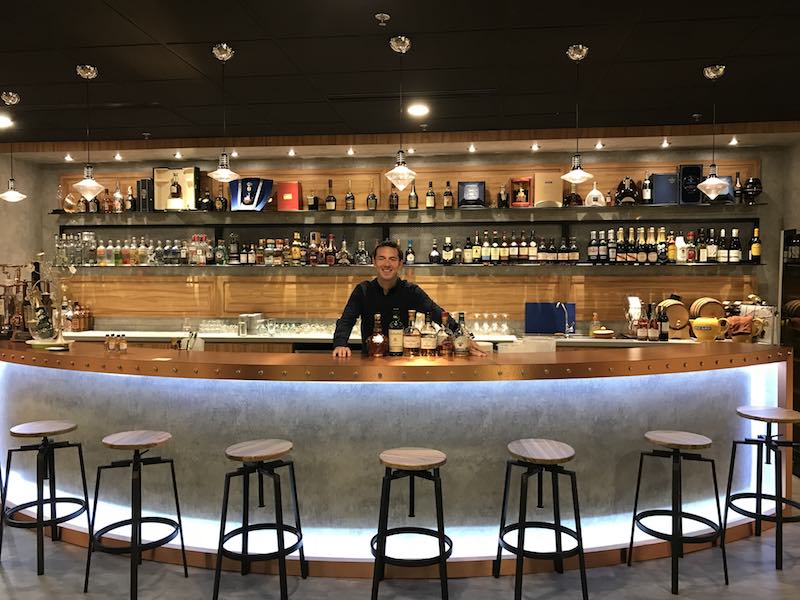
Denis behind the bar counter
Pernod Ricard uses the bar for training within the company and industry. Denis shared that the company trains bartenders, bar owners, bar managers and their trade partners in the bar. Of course, employees have access to the bar and they can “drop-by” after work for a drink or two.
Besides the bar counter, there is an open area that can hold up to say about 30 people by our judgement.
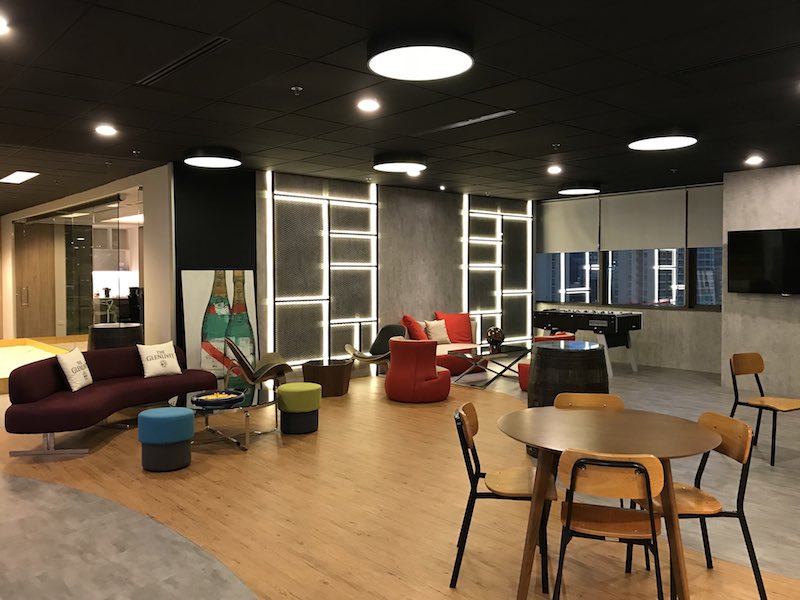
Appealing Open Area in the bar
The office bar is a good place for employees to relax after a hard day’s work with some whiskies, cognac or gin. The bar is well-stocked, and there are various delicious blended and single malts that we spy from our seats at the counter. We spent a long time here to understand more about the whisky range of Pernod Ricard and of course, chatting about whiskies!
Denis filled the evening with lovely whiskies and his generosity as we sample drinks after drinks. We started with two special bottlings of the Chivas Regal – the Extra and the Mizunara. We then moved on to the Royal Salute 21 Years, Ballantine’s and the single malts.
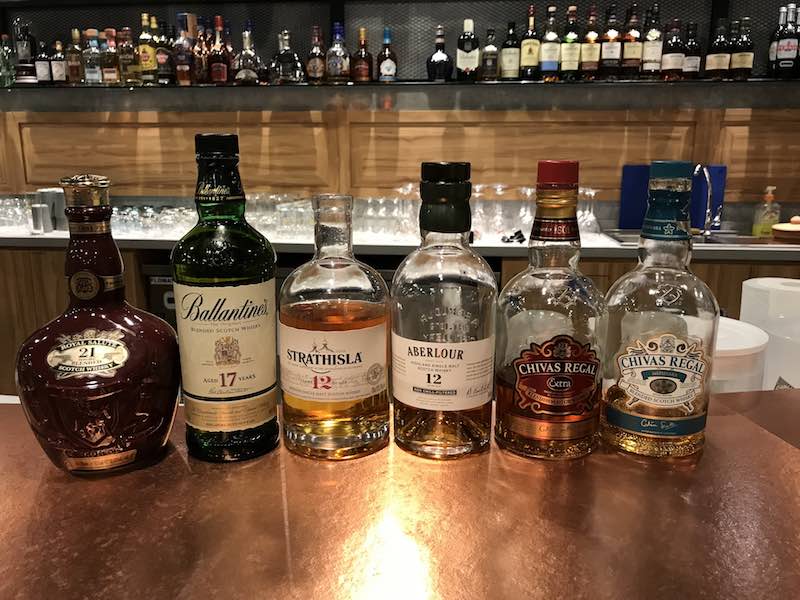
The range of whiskies we tasted
Those of you who know me (Geek Flora) personally will know that I am not a huge fan of the Mizunara cask as I am not fond of incense in my whisky. The Chivas Regal Mizunara is of course, not something I am so keen to try. It is finished in Mizunara casks for three to six months, so I am wary of the incense notes when I nose it. Interestedly, the incense here is fragrant and well, not so intense! I get the vanilla more than the incense. You could say that it is a welcoming change, but it is still not as outstanding as the Chivas Regal Extra.
Now, the Chivas Regal Extra is made up of mostly sherry-cask whiskies. That shows up quickly in the nose and palate where sherry notes and caramel fight for the limelight. Although it is a 40% blended whisky, it holds up to the test when we leave the whisky in the glass to air. After about 45 minutes of airing in a Glencairn glass, the whisky opens up beautifully with deep sherry notes, caramel, hints of vanilla and gentle spice. It does not taste like a 40% anymore. It is fantastic! What is even better is the fact that the whisky costs only SGD$85. Perfect for a party, don’t you think so?
The Royal Salute 21 Years is a famous expression that many whisky drinkers enjoy. It is easy to drink and looks royal sitting in those ceramic decanters. We had more than just a sip of the Royal Salute 21 years and enjoyed the oily, sweet palate as the whisky slid gently down the throat.
We want to highlight the Ballantine’s 17 Years Old here because it is not a popular brand in Singapore. It is well-loved in Taiwan, and our Taiwanese friends love the brand. We requested to have a taste of it, and Denis generously opened a new bottle just for us to try.
Ballantine’s is spicier than the Chivas, which makes us think that the blend is likely to contain more whiskies aged in ex-bourbon casks. There is also a possibility of having some rye in it. The flavours are also more prominent. Slightly grassy, with green fruits such as apples, pears and even some grapes in it. Even the finish is longer than the Chivas, with dry sweetness leading all the way till the end.
Pernod Ricard carries many single malts that go into their blends. Some of the single malts include The Glenlivet, Aberlour, Strathisla, Allt-a-Bhainne and Braeval. Glen Keith, Longmorn, Glenburgie and Glentauchers are also part of their portfolio. With so many single malts under their belt, Pernod Ricard’s position as the second largest company of wine and spirit in the world is not at all surprising.
We tried the Aberlour 12 and the Stathisla 12. Interestedly, we had tried whiskies from both distilleries before, but never an official bottling. It was a perfect chance for us to try them out indeed!
The Aberlour 12 is delicious with plenty of sherry and caramel notes. What is unique about this expression is the grape notes that I picked up on the palate, almost like red wine. We found out later that this expression is not the usual 12 years old, but one of the limited editions. Talk about it being a special one!
The Strathisla 12 has more bourbon influence, and the oak is stronger too. Perhaps the distillate is lighter and takes in more influence from the cask. Nonetheless, it was a lovely dram that speaks of creamy vanilla, mild oak and a little spice.
After some drams, Denis invited us for a tour around the office. They have themed meeting rooms which impressed us very much with the beautiful decorations and practical use of the various items within the rooms. They have a Perrier Jouet room, a Chivas Room, a Monkey 47 Room, a Jameson Room and a secret Martell Room! Outside the rooms, there is also an open area where employees can discuss matters over a cup of coffee or a game played in a sandpit!
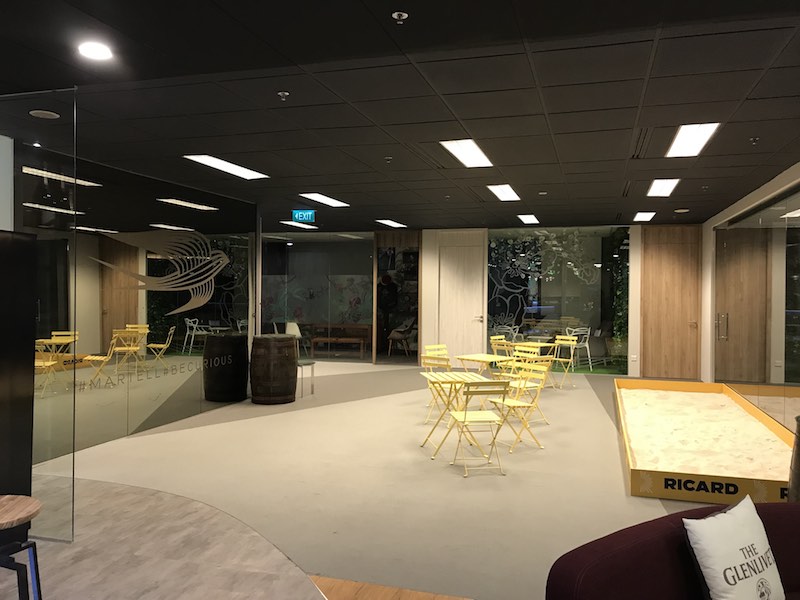
Open Area and Sandpit
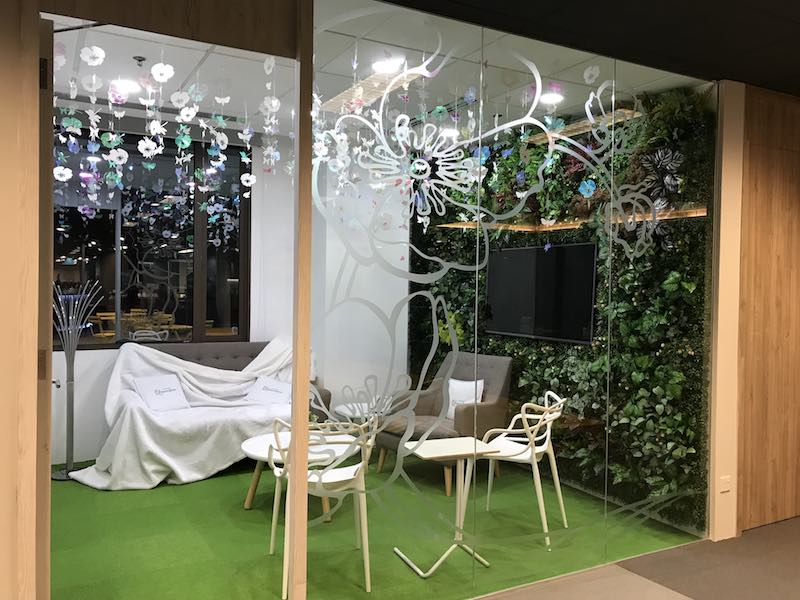
Perrier Jouet Room
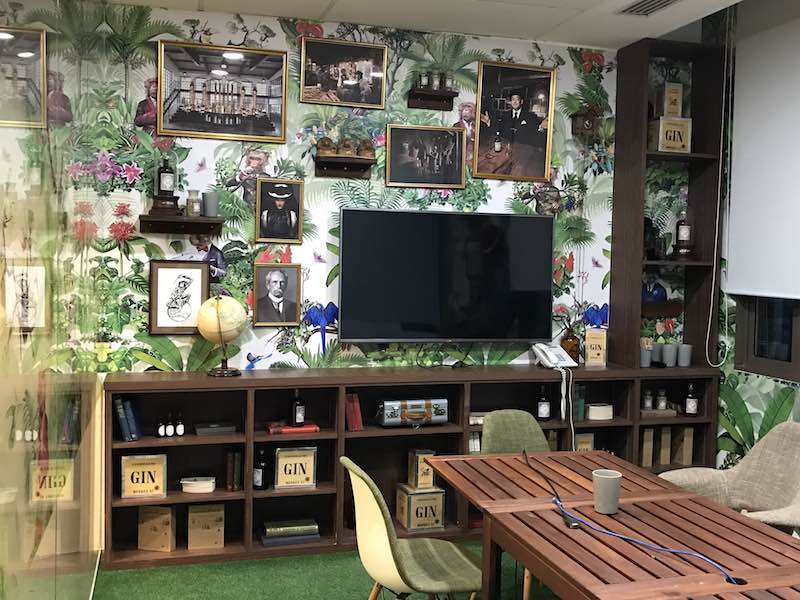
Monkey 47 Gin Room
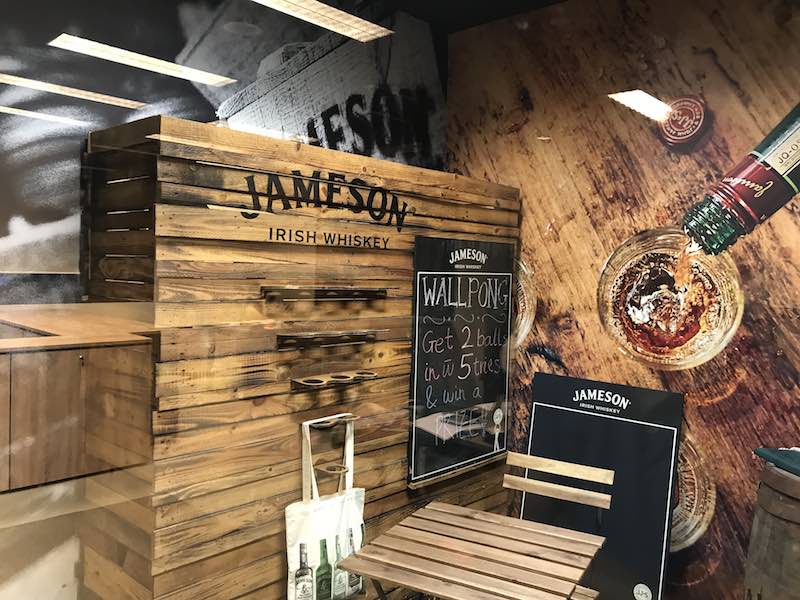
Jameson Room
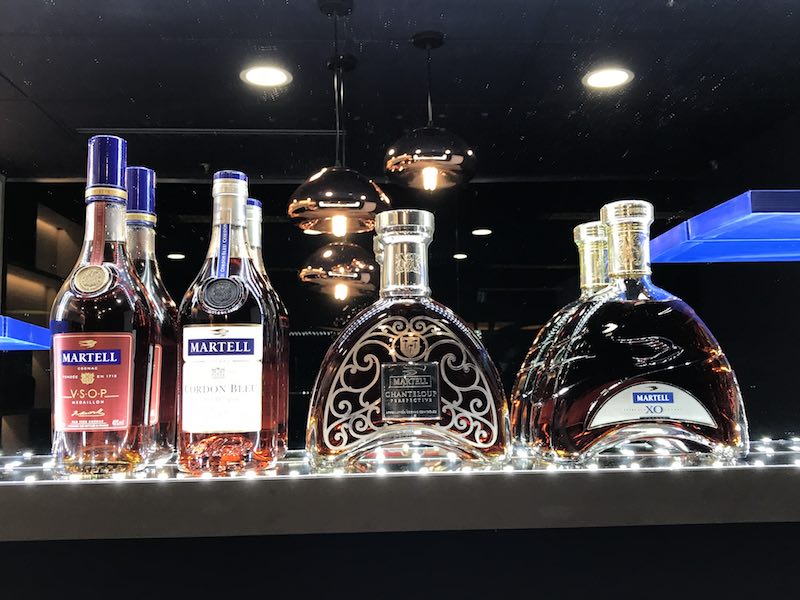
Display at the Martell Secret Room
It was a pity that I failed to take a full picture of the secret Martell room, but well, it was a thrill to find it! Haha!
As we headed back to the bar to pick up our things, Denis found an open bottle of the Chivas Royal Salute – The Polo Collection. As it is a special edition, Denis invited us to sit down again for a taste of it. It is different from the usual Royal Salute. The Polo Collection has a spicy tinge to it and opens up a delicate, floral flavour. The nose is perfumey and gentle, almost like a soft touch from a rose petal.
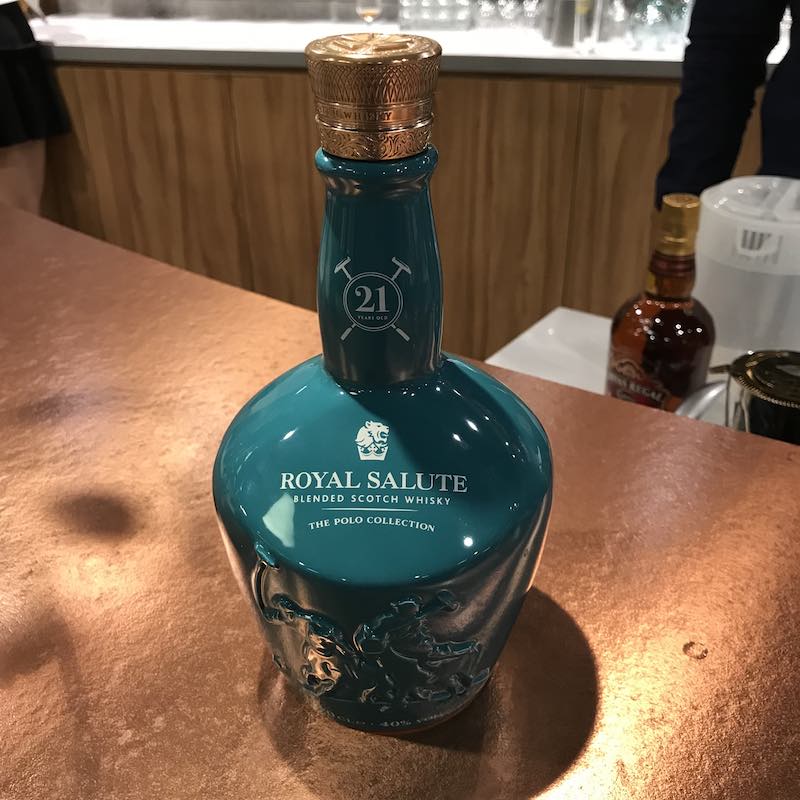
Royal Salute Polo Collection
It was time to say goodbye after the last drop as the night was deepening. We bid good night to Denis and thank him for the wonderful evening. We look forward to seeing Denis again and hope to work with him in future!
As for you, our dear readers, we hope to bring you some superb deals from Pernod Ricard too!
The story of Glen Flagler distillery linked closely to that of Inver House Distillers. Glen Flagler was a unique distillery as it sat within a larger complex known as the Moffat complex in Airdrie. The purpose of Glen Flagler was to fill in the gaps for Inver House’s blends, but eventually, the company released some single malt expression. There was also a “Pure Malt” expression of Glen Flagler.
Inver House Distillers (IHD) formed in 1964, backed by Philadelphia’s Publicker Industries. IHD in turn established Glen Flagler in 1965. The distillery found its home within the Moffat complex in Airdrie, together with Garnheath grain distillery. Within the compound, there was another distillery named Killyloch.
The name, “Glen Flagler” honoured the owner of Publicker Industries, Simon Neuman. Flagler was the name of a road in West Palm Beach, Florida, where Neuman stayed. IHD initially built Glen Flagler for their blends but later on, also released official single malts such as the 5-year-old, 8-year-old and a NAS bottling in the 1970s-1980s. A 30-year-old expression appeared in 2003! Independent bottlerSignatory Vintage also bottled a handful of expressions during the 1990s.
Troubles brewed for Publicker Industries in the 1970s, sending waves of unfortunate events to IHD. These events affected Moffat complex. Killyloch closed in the early 1970s, and only Garnheath grain distillery and Glen Flagler continued soldiering on. Alas, it could not last either, and IHD shut Glen Flagler in 1985. Garnheath grain distillery shuttered in 1986.
Sadly, IHD demolished the Moffat site in 1988, bringing Glen Flagler distillery to the dust as well. Currently, only the warehouses, blending and bottling facilities remained and acted as Inver House Distiller’s headquarters.
As mentioned, the whiskies from Glen Flager are hard to find. The official releases appear in auction sites now and then so if you are looking to own a bottle, watch out for them! Otherwise, you can find the Glen Flagler 5 Years Old at The Single Cask as a part of their “Old but not Forgotten” flight.
Saint Magdalene, also known as Linlithgow, was a Lowland distillery that had its heydays back in the 1800s-1900s. It was a rather large distillery that occupied the coveted position between the Union Canal and the railway line. The distillery had both its railway line and pier, which was something that other distilleries did not have.
Saint Magdalene was one of the five distilleries within the town of Linlithgow and outlasted every one of them. Sadly, it followed the paths of the other four distilleries. Sebastian Henderson built Saint Magdalene in the mid-1700s. He aimed to oppose the Bulzion distillery that opened earlier. Nothing much was known about the distillery in its early days. The fate of Saint Magdalene changed when distiller Adam Dawson bought the distillery in 1798.
Adam was an experienced distiller who operated the Bonnytoun distillery nearby. He transferred his operations to Saint Magdalene after purchasing the distillery. As the years passed, Dawson’s business grew by leaps and bounds, and he expanded the distillery to absorb the lands of the defunct Bonnytoun distillery. The distillery stretched across 10 acres of land in its most successful years.
The Dawson family owned the distillery until 1912 when the family ran into financial issues. Faced with a decline in the market and the intense competition within the Scottish whisky industry, the Dawson family liquidated their company, A&J Dawson. With the liquidation, Saint Magdalene had to go. Distiller Company Ltd (DCL) bought the distillery and further licensed it to William Greer and Co. By 1914, Saint Magdalene joined four other distilleries to become the Scottish Malt Distillers. The other four distilleries were Glenkinchie, Clydesdale, Rosebank and Grange.
DCL (now Diageo) continued to operate Saint Magdalene throughout much of the 1900s, but unfortunately, the distillery closed down in 1983. Saint Magdalene was one of the nine distilleries that were closed by the company. Diageo removed the stocks and renovated a part of the distillery into residential flats in the early 1990s.
Nonetheless, you can still see the malting barn and kiln at the original site, as they are C grade listed buildings (under protection). The pagoda roof (you can see it in the above picture) is the last reminder that this was once the magnificent Saint Magdalene distillery.
Saint Magdalene (Linlithgow) whiskies may not be affordable, but they are mostly good whiskies which you can try at whisky bars that serve old and rare whiskies. For example, we had a pleasant experience at The Swan Song where we got to taste a (Signatory Vintage) Linlithgow 1982 (25 years old). The sweet and fruity experience was not something to forget quickly! If you look to own a bottle, watch out for them in auction sites but do be prepared to pay heavily for a bottle.
11311 Harry Hines Blvd
Dallas, TX, United States
(555) 389 976
dallas@enfold-restaurant.com
